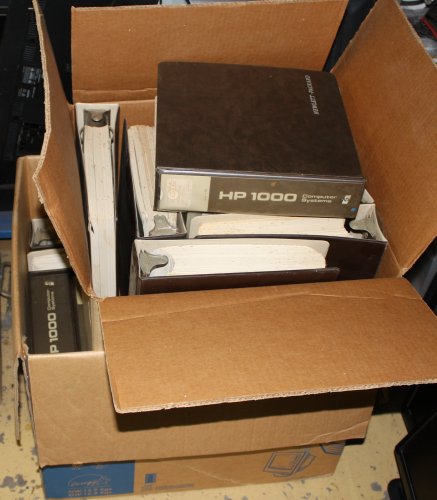
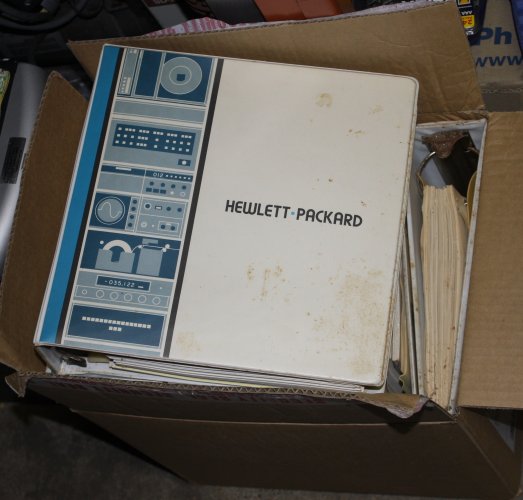
20190620 TerraHertz http://everist.org NobLog home Updated 20200119
One of my more tangled and slow projects is the restoration of a Hewlett Packard 1000 series minicomputer. I rescued it from junk-yard destruction back around 2000, along with its two magnetic tape drives but alas no hard disk, terminals, or documentation. There were more urgent things like house constructions going on here then, so the HP-1000 sat around in corners for years.
In 2013 I thought I'd sell it, and began what was supposed to be a quick disassembly to clean & inspect. Except I learned enough about the machine to decide I liked it too much to sell it. The extensible micro-coding feature for instance, intrigues me. That project stalled on my failing to find a schematic for the power supply module — which I needed for the careful recommissioning process.
That may sound like too simple a reason to stall a project, but it was actually a bit more complicated. I'd contacted the owner of the HP Museum (in Melbourne), who might have a copy of the schematics in his archives. The email conversation went on-hold as he was in the Himalayas mountain climbing. When I attempted to resume (after about a year) he'd come back to Australian then gone back to Himalayas climbing again. And died there.
This was more than awkward. Back in 1995 a close friend of mine, David Hume, also died climbing in the Himalayas. On Mt Makalu, where he was the first Australian to reach the summit, but died during the descent.
Thus the whole project acquired a fairly strong emotional avoidance factor, in addition to the lack of a power supply schematic. It got packed into a box, and put aside.
As an offshoot of the HP 1000 work, I'd also attempted to produce a high quality electronic copy of the "HP 1000 E-Series Operating and Reference Manual" I'd bought on ebay along with other docs in a binder. But hit an interesting problem, surprising in the lack of an existing general solution. To do with the elimination of ink screening dot patterning from half tone printed documents. This had become a project in itself, incomplete and with an incomplete writeup to go with it. Also a more general article 'On Scanning' for which the half-tone processing problem was a dependency, so that isn't finished either. With a solution in sight, I'd had to switch to other urgent chores, and never did get back to that.
Btw, it's not like these projects are the only ones unfinished. It's not laziness; it's the sheer stupid number of projects I take on, that results in some of them rarely getting work increments. Doesn't mean they are permanently stopped.
Skip forward to 2018/19, and my new association with the Australian Computer Museum Society. This brought involvement with a range of other retro-computing groups I hadn't known of before. Lots of resources and expertise available, not to mention getting my hands on some historically interesting old computing gear. Opportunities I had never thought would be possible, given my limited finances.
In contrast to that expansion of resources, there'd simultaneously been a serious loss of resources. Recently I'd made the distressing discovery that apparently all the major sellers of second hand operating and service manuals for technical equipment have ceased to exist.
For those interested in restoring and maintaining older electronics test and computing equipment, and aware of the historical importance of those manuals, this is a disaster. No, they are not all online, far from it. Even with the proportion that are, the loss of the historical paper originals is a tragic loss. Equivalent to the burning of the Library of Alexandria. We (the human species) are going to be very sorry this has been allowed to happen, at some time in the future.
As a side effect though, it means that what few paper copies of old technical documentation do still survive, have become far more precious.
That was the background, for context to...
In mid-May I'd spent a day helping out with an ACMS working bee, moving some asquisitions to a storage space up the coast from Sydney, and doing some tidying of that space. (It's a tightly packed haphazard pile.)
There, unexpectedly, I'd found a large set of HP-1000 documentation. It was 'hidden' in the very last shelf of a rolling compactus, that had been piled in to the point of not being openable. After clearing the end rails, I'd done a quick scan through each bay. All were filled with DEC-related manuals, more DEC manuals, and more...
I'd nearly quit before checking the last bay, then reminded myself 'no, always check all spaces.' An old rule from some experiences rumaging in abandoned buildings.
Treasure! Irreplaceable, unobtainium, absolute gold. At least for anyone interested in restoring a HP-1000 computer system. Of course it was in the last bay, and down the bottom too, in a space so dark I could barely see. Where else would treasure be?
Fortunately the person in charge that day let me borrow them for closer examination, after I promised to catalog the contents.
And so here they are, in boxes on my workshop floor that evening.


The quantity of them presents a problem. Where to store them, while I work on them? Even just for sorting they need to be on shelving. And I have no spare shelf space.
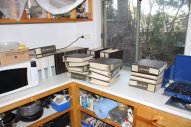 |
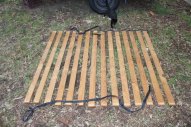 |
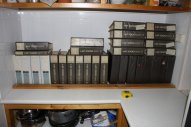 |
 |
1. Starting some shuffling in the 'kitchen' of my workshop. There's a space, but what about shelves?
2. A while ago I'd grabbed a street tossed bed, for the timber. Here separating the bed slats from the spacing straps. Hey, it's free timber.
3. I love serendipity. That is a bed slat, original length, and it fits in the available space like that.
4. Preparing to turn 5 slats into one plank. The 6th slat is just a backing piece, not to be glued.
 |
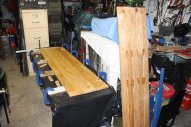 |
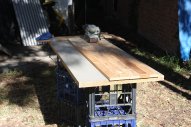 |
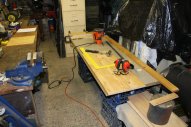 |
1. Clamps, hammered wedges and urethane glue. The black plastic sheet (a slit open garbage bag) is to avoid the resulting plank being stuck to the work bench. (That glue is really tough.)
2. One glued, about to do another.
3. After scraping off the excess foamed glue, sanding the board flat.
4. One of the planks gets cut up for the bookshelf verticals.
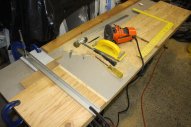 |
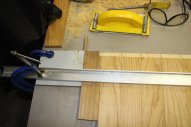 |
 |
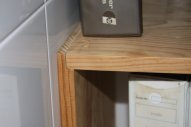 |
1, 2. A little bit of routing.
3, 4. Finished shelf. The 4 pieces are just sitting there, no need to fasten them to each other. The books and walls hold it in place, including the center upright. Besides, this is meant to be temporary. Not long term storage for the manuals. For one thing this is a kitchen, and the air humidity varies. Not good for long term preservation of paper.
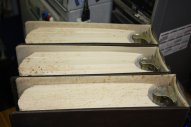 |
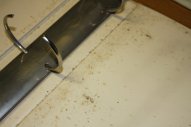 |
 |
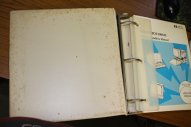 |
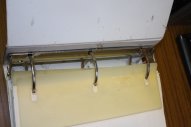 |
No comment needed.
There are 31 binders. They had to be cleaned one by one, to avoid any risk of mixing up the contents. With every one the cleaning proceedure was:
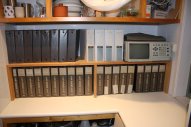 |
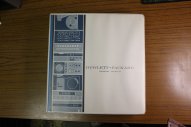 |
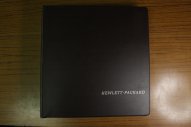 |
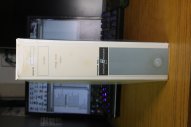 |
During that I'd also sorted them. It turns out there are three separate sets of HP 1000 related binders.
 19 binders, spine pouch inserts say
19 binders, spine pouch inserts say
"HP 1000" in brown and gray.
Labelled, plus sequence numbered.
Catalog complete.
1 thin binder: "System support log" including some brochures. SN 00392
18 fat binders, numbered 1..19 (#15 is missing.)
2178A opts 014/015/022 Nov 21 1983 SN 00392 (See HP 1983 catalog, pg 598)
Customer: Westinghouse electric corp.
For HP 1000 model 60/65 computer system. Covers RTE-6/VM OS.
 8 ring binders, brown, all same size, all very full.
8 ring binders, brown, all same size, all very full.
There is a spine pouch; originally nothing in them.
Catalog complete.
 Four binders, all same size, white with blue-gray spine inserts.
Four binders, all same size, white with blue-gray spine inserts.
Cover is printed card, blue-gray, sealed insert.
Catalog complete.
Contains manuals of a suite of hardware diagnostics software for HP 1000 computers and peripherals.
Programs are standalone binary, with a common 'configurator' utility. No OS required.
Dates range: 1974 — 1982.
Spines say:
"24396E"
24396-14001 INDEX Binder 1
24396-14002 Binder 2
24396-14003 Binder 3
24396-14004 Binder 4
While there I also searched for the missing volume #15 from Set 1, any other remnants of Set 2, and any HP punched paper tape sets that also may be related to these manuals.
No luck at all on any of these.
There are also no clues on what happened to most of the rest of the complete system mentioned in the lists. Just gone. Sad.